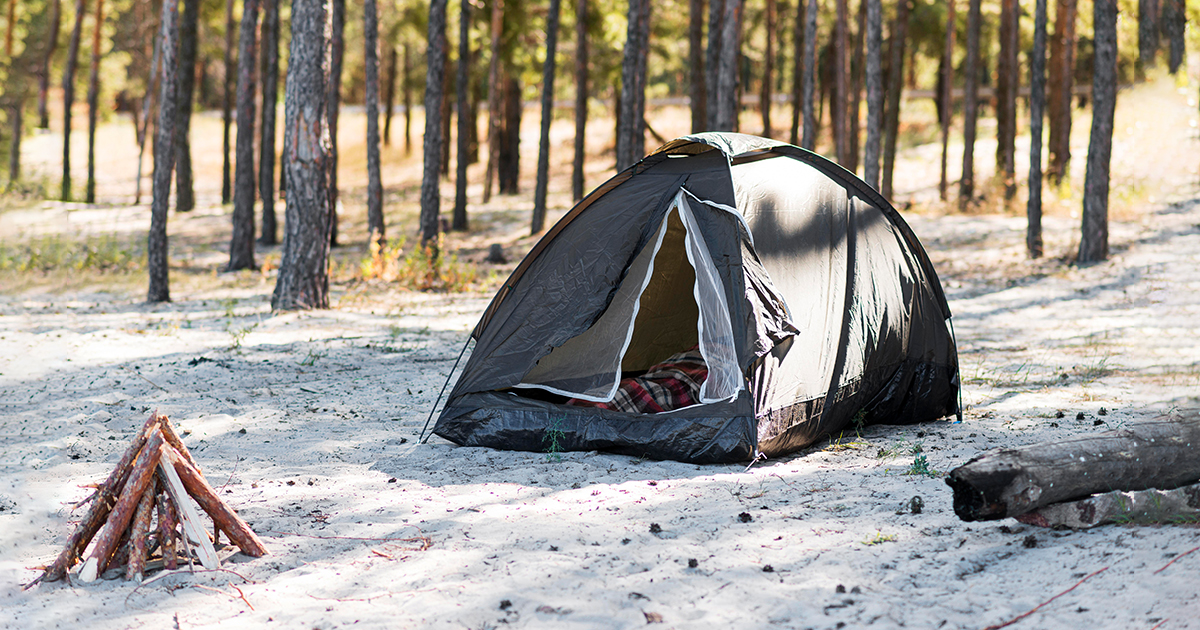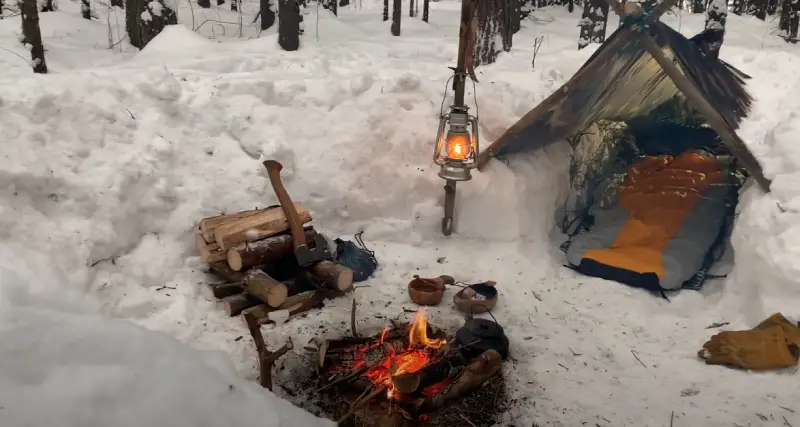How to Insulate a Tent for Winter Camping: 20 Methods [DIY]
In 2018, I went camping with my baby and her furry friend, and it was an exciting adventure. I struggled to keep my
little ones warm during the trip due to the frosty air and snow-covered landscape. With my years of camping experience, I developed some fantastic strategies to keep us all comfortable and warm.
When winter camping with my baby and pet, I found a simple solution to insulate our tent. I brought a large piece of foam padding and placed it under our sleeping bags. This created an insulated barrier between us and the cold ground, keeping us warm throughout the night.
In this blog post, I’ll share my experience and some tips on insulating your tent for winter camping to keep you and your family warm and cozy.
How to Insulate A Tent for Winter Camping: 20 Best Tricks
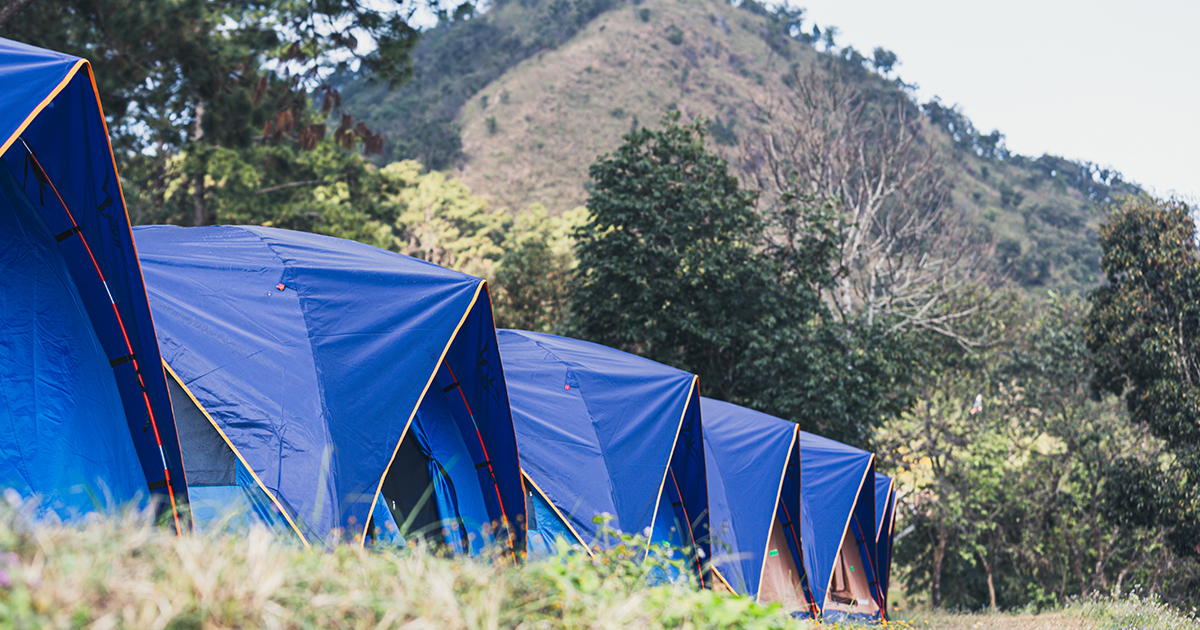
I quickly realized the significance of properly insulating a tent for winter camping. As a traveling mom with a baby and a four-legged companion, I’m excited to share my winter camping secrets.
Choosing the Right Tent
I had to consider a few essential factors when choosing the right tent. Firstly, I needed a winter tent to withstand heavy snow and strong winds. After researching the different types of tents, I purchased a four-season tent designed to withstand harsh winter conditions.
Ideal campsite
Finding an ideal campsite was also crucial for a comfortable camping experience. I looked for a site with natural windbreakers, such as trees or rocks, as these could help to reduce the wind’s impact. I also ensured that the campsite was flat and free of snowdrifts.
Thermal Blankets
To further insulate the tent, I utilized thermal blankets. I found it helpful to place them over the tent’s ceiling and walls, which provided an extra layer of warmth. Using thermal blankets also proved an excellent way to keep my baby’s and pet’s body heat trapped inside the tent.
Insulating the Tent Floor
Insulating the tent floor was vital to staying warm and comfortable at night. I used insulated sleeping pads underneath our sleeping bags to keep us warm and dry. I also utilized a rug to add an extra insulation layer between the ground and the tent floor.
Employing Foam Padding
Regarding foam padding, I’ve found it to be a crucial component of our winter camping gear. It provides extra warmth and insulation against the cold ground and adds a layer of cushioning that makes sleeping more comfortable for all of us. I’ve experimented with different thicknesses and densities of foam and have found that a thicker, high density foam works best for us.
Smaller Tent
Using a smaller tent has also been a game-changer for us. While it may seem counterintuitive, a smaller tent means less space to heat and less air to circulate, making it easier to stay warm. Plus, our smaller tent is easier to set up and take down, a significant bonus when moving.
A Tent Heater
Investing in a tent heater has also made a massive difference for us. I was hesitant to use one at first due to safety concerns, but after researching and taking the proper precautions, I’ve found it to be a reliable and efficient source of warmth. I opted for a propane-powered heater that has an adjustable thermostat and built-in safety features.
Camping Location
Obviously, the camping location has an impact on how warm I am. When choosing a site, I consider elevation, wind exposure, and proximity to water sources. I also closely monitor the Iather forecast and pack accordingly, bringing extra layers, blankets, and hot water bottles just in case.
Tent Footprint
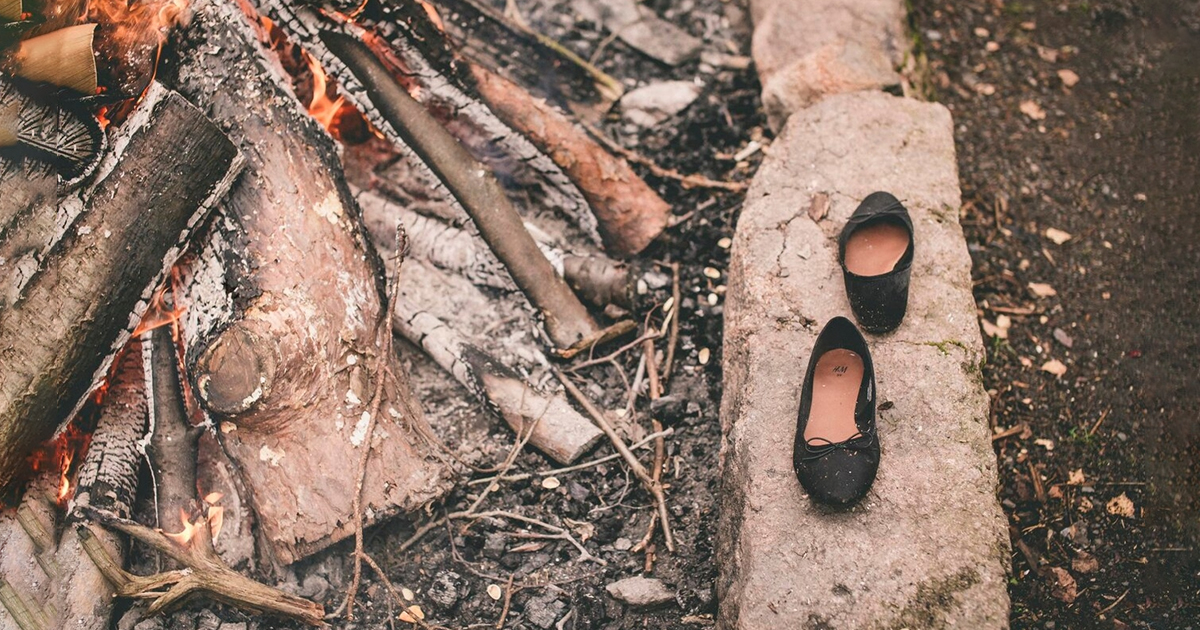
During those chilly winter nights, I relied on a tent footprint to keep us warm and cozy. It shielded our tent from wear and tear and provided an additional insulation layer. This allows us to sleep peacefully and comfortably, even when the temperature dipped below freezing.
Building a Snow Wall
I also learned the benefits of building a snow wall around our tent. This not only provided us with extra protection against the wind, but it also helped insulate our tent. Piling up snow around our tent’s perimeter blocked the cold air from seeping in and kept us warmer for longer.
Bringing Heat Packs
Of course, bringing heat packs was also an essential part of our winter camping gear. I packed different types, such as disposable hand warmers and reusable heat packs, to ensure I would have warmth whenever needed. With these heat packs, I could keep our baby and pet warm and comfortable, even during the coldest nights.
Clearing the Ground
I made sure to clear the ground properly before setting up our tent. This involved using tools such as a shovel and broom to remove snow and debris that could make our tent uneven and uncomfortable. I could set up our tent more securely and comfortably by clearing the ground properly.
Constructing Wind Breaks
When it comes to winter-proofing the tent, one of the critical factors is choosing a good spot to pitch it. Finding an area sheltered from the wind with good natural insulation is essential. Look for places protected by trees, shrubs, or even natural rock formations. This helps keep the tent warmer and reduces the chance of it being damaged by strong wind gusts.
Winter-Proofing the Tent
Once I found a good spot, I built windbreaks around the tent. This was especially important for us as I Was camping in an area prone to sudden bursts of winter wind. I used natural materials such as fallen branches and rocks to construct windbreaks on the exposed sides of the tent. This helped to keep the wind at bay and also helped to retain heat by creating a pocket of warm air around the tent.
A Warm Sleeping Bag
A suitable sleeping bag is crucial in keeping warm during winter camping. With a baby in tow, I knew that I needed a sleeping bag that was not only warm but also safe and comfortable. I opted for a down-filled sleeping bag with an extra insulation layer around the baby’s sleeping area. This kept us warm and ensured our little one stayed safe and snug all night.
Using Hot Rocks
As a traveling mother with a baby and a furry companion, I know firsthand how important it is to insulate our tent
properly for winter camping. One of the methods I have tried and tested is using hot rocks.
Not only do they provide warmth and comfort, but they also serve as a makeshift stove for cooking meals. Understanding the different types of stones and their properties is crucial for safety. I opt for igneous rocks like granite and basalt, which retain heat for extended periods.
Ground Insulation
Ground insulation is also a must-have for a cozy and comfortable camping experience. I’ve experimented with various materials and found that closed-cell foam pads offer the best insulation and durability. Ensuring that the insulation covers the entire tent floor, including the corners and edges where heat often escapes, is essential. This helps keep us warm and also protects the tent floor from wear and tear.
Placing a Tarp Under the Tent
I always place a tarp under our tent as an additional insulation layer. Not only does it protect the tent from moisture and damage, but it also prevents cold air from seeping through the ground. I’ve used a variety of tarps but have found that heavy-duty polyethylene tarps offer the best protection against snow, rain, and wind.
Integrating Rugs and Carpets
I always prioritize ensuring I am warm and comfortable during our winter camping trips. I highly recommend integrating rugs and carpets into your tent setup.
Not only do rugs and carpets add an extra layer of insulation to the ground, but they also provide a cozy atmosphere
inside the tent. I love how they give a homely feel to a temporary living space.
When choosing the right rug or carpet, go for something with a low pile to prevent tripping hazards. Wool and synthetic fibers are great options as they are durable and water-resistant. A nylon rug is also easy to clean and dries quickly.
To maintain your rugs and carpets while camping, shake out any dirt or debris regularly. If it gets It, hang it up to dry in a place with good air circulation. A handheld vacuum or a broom can also be used to keep it clean.
Blanketing the Tent
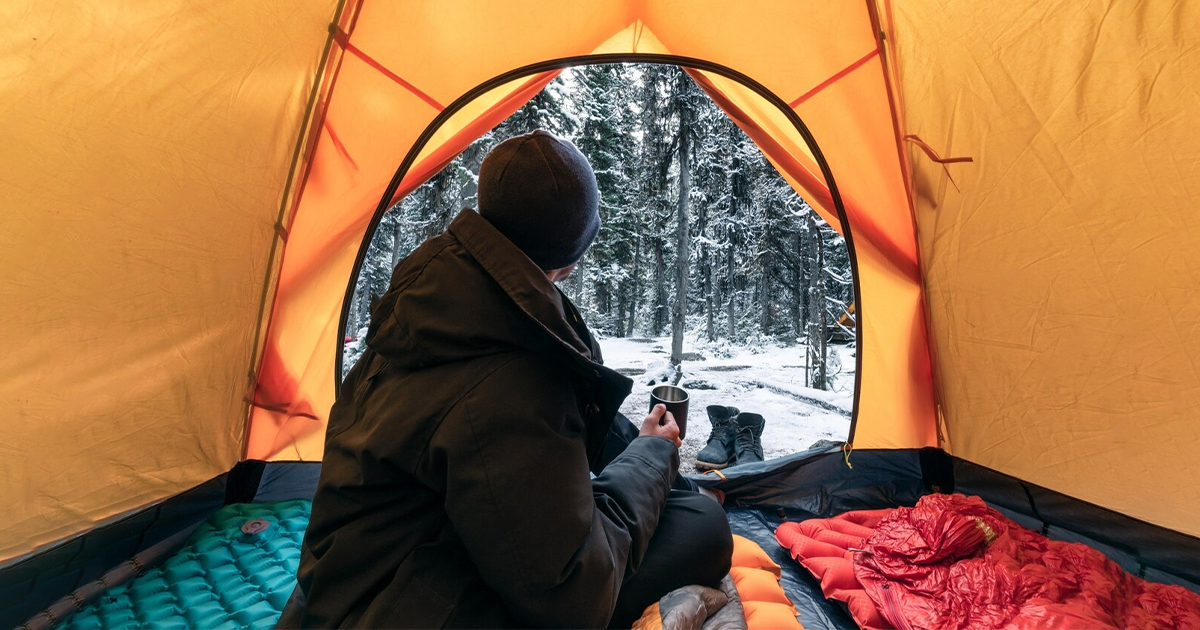
Covering the tent with a blanket is another effective way to insulate your tent during winter camping trips. There are different blanket materials to consider, such as wool or fleece, but I prefer using a thick, insulated camping blanket.
Attaching a blanket to the tent can be done in several ways. I recommend using clips or carabiners to secure it onto the tent poles. A rope or bungee cord can also tie it down to the ground.
A blanket not only adds extra insulation to your tent but also acts as a sound barrier, reducing the noise from outside. Plus, it provides privacy and intimacy to your living space.
Conclusion
I hope my experience and tips have given you some valuable insights into insulating your tent for winter camping. Remember, preparation is critical. You don’t have to sacrifice comfort and safety because the temperature drops.
From choosing the right tent to integrating different insulation techniques, there are plenty of ways to make your
winter camping adventure successful. Remember to share your tips and tricks in the comments below, and happy camping.
FAQs
What Can I Do To Make My Winter Tent Warmer?
I would add extra insulation between the layers to create a cozy atmosphere inside my tent. Using foam pads, newspaper, or an emergency blanket can trap heat and keep me warm. Without thick materials, an emergency blanket can work just as well.
